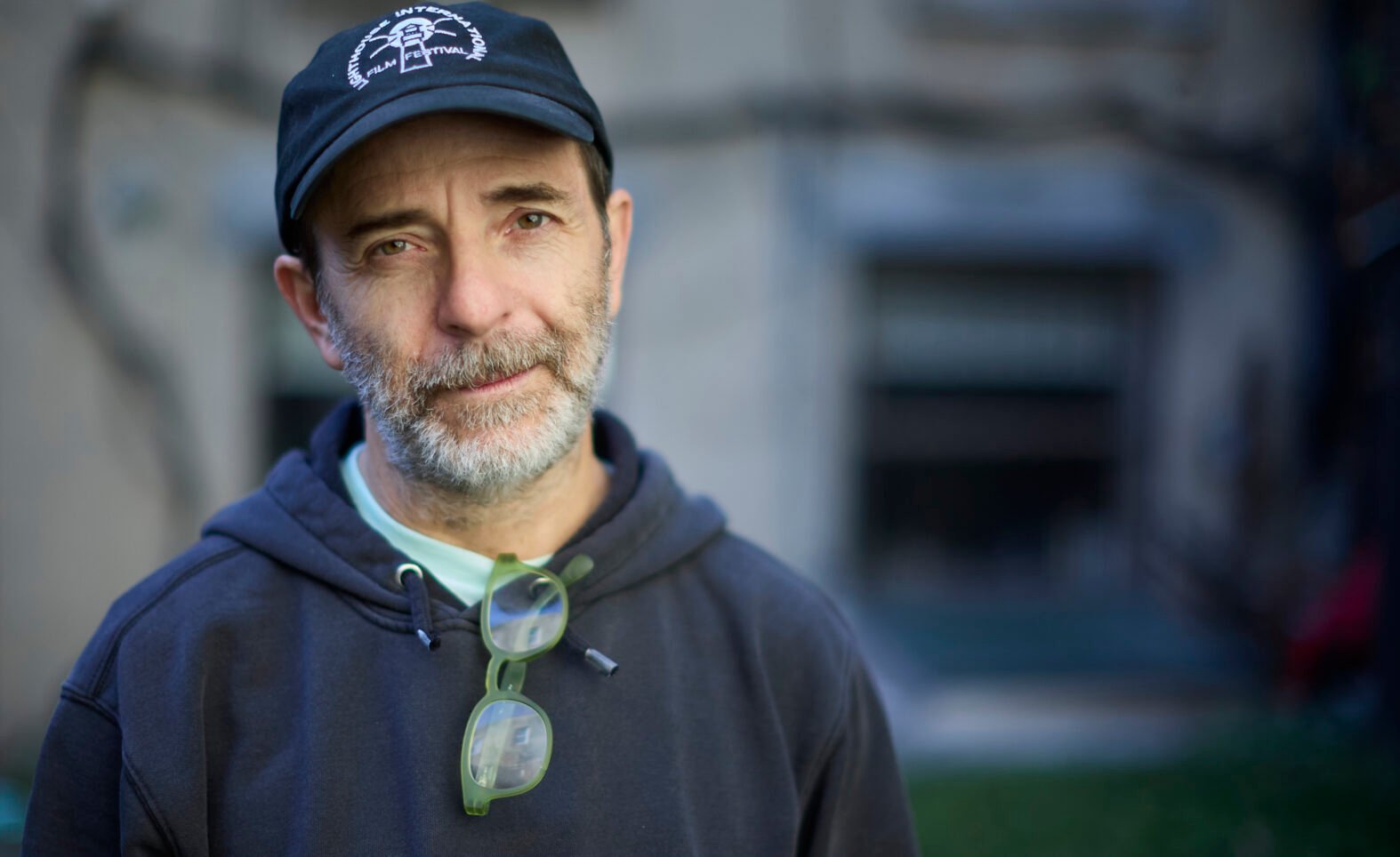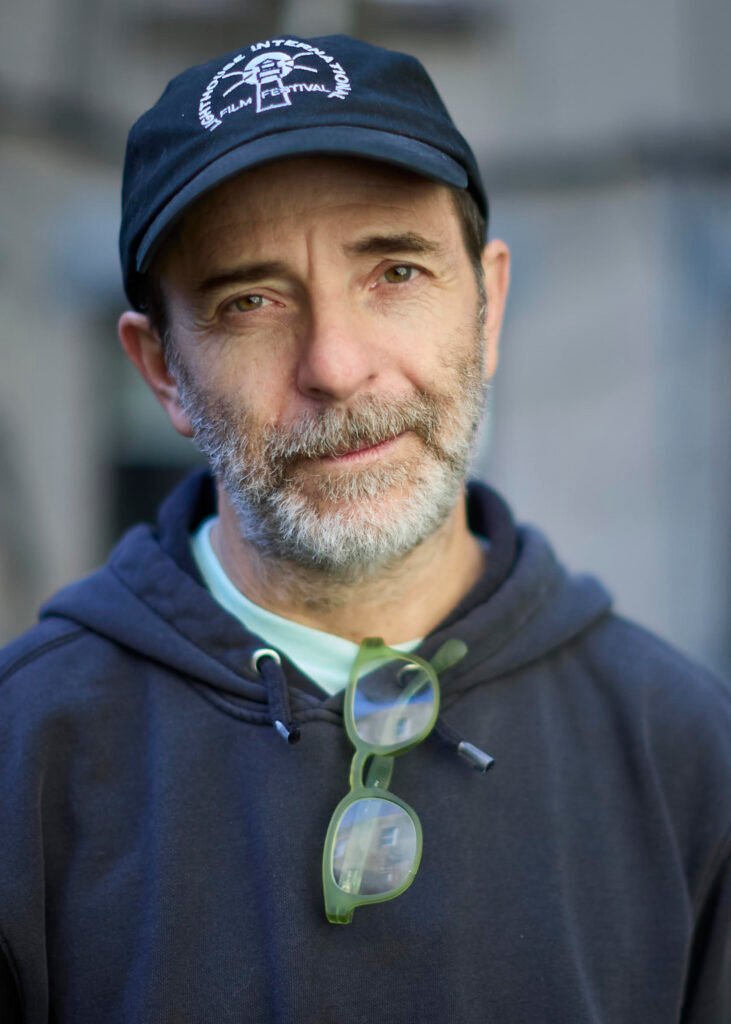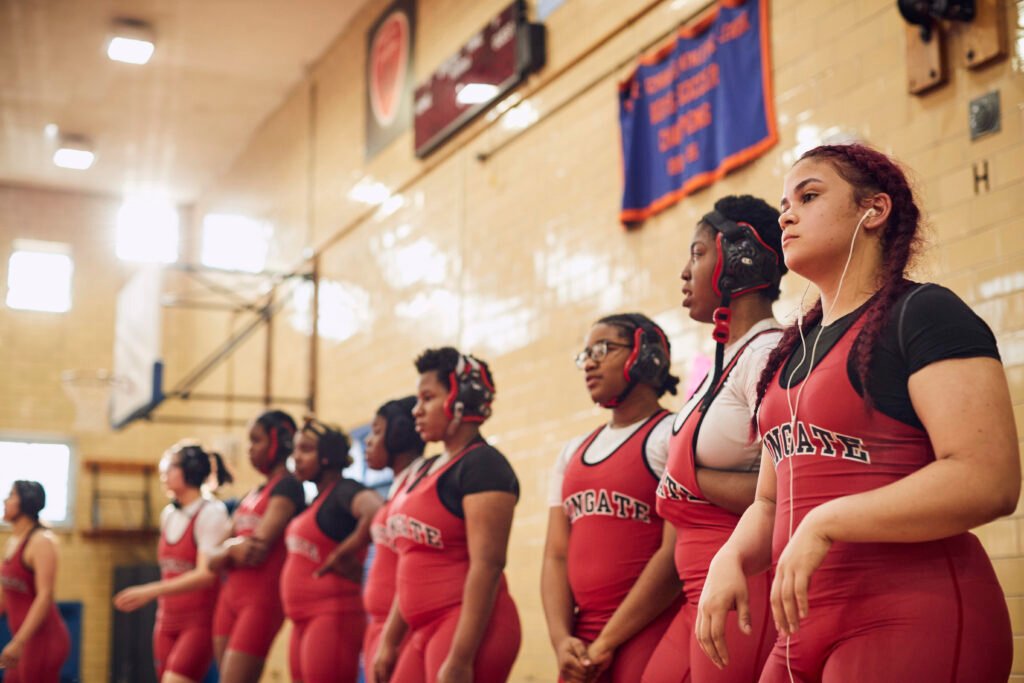Tron: Ares — A Beautiful Machine Searching for a Soul
There’s something about returning to the TRON universe that always feels ...

There’s something undeniably powerful about the way a story finds its filmmaker, long before the camera ever rolls. For Mark, All American wasn’t born from a grand production plan, but from a simple moment of curiosity that led him into a gym full of young wrestlers fighting for space, identity, and possibility. What started as a still-photography project quickly evolved into a five-year journey of trust, vulnerability, and discovery, one that pushed him not just as a filmmaker but as a human being. In this conversation, Mark opens up about the paths that shaped him, the young women who became the soul of the film, and the emotional and creative challenges behind documenting lives lived at the intersection of culture, gender, youth, and ambition.
Mark: For most of my career, I’ve been a photographer in the fashion world, which transitioned into directing commercials for clients, brands and agencies. My work has taken me all over the world. My creative approach has always been documentary in nature. I’ve always hoped and planned on becoming a filmmaker someday. This film originally started as a still photo project, but the moment I walked into the gym and met some of the kids in the Beat the Streets program in New York City, I realised that these kids’ Stories needed to be told. I called an old friend who was shooting documentaries, Shane Sigler. He was also a college wrestler and familiar with the program. Together, we started filming. I naïvely thought that I could just make a film. Years later, alongside the trust we built with the participants, the collaborations, and friendships within the wrestling and film community, I can proudly say that we all made this happen together.
Mark: Wrestling is what brought me into the gym in the first place, as it was something familiar and from a part of my youth that I had long since forgotten or ignored. The truth is that I’m always inspired by people. In
my work, I can be a bit of a chameleon and adapt and identify with a lot of different people and situations. For a large part of my career, I’ve worked alongside teenagers and young adults. I’ve always gravitated towards coming-of-age films, perhaps because I was sensitive and questioned so much about myself at that age. I think self-discovery has always been an important consideration in my life. When I wrestled, I was a young, insecure high school kid, and Wrestling gave me a ton of confidence. I’m not sure I discovered who I was through the sport, but I think the lessons learned helped guide my head and heart to eventually find my grounding.
Mark: I went through a bit of discovery in the story before focusing on Naomi, Jojo and Arham. Coach Barry was one of my original subjects. I met him when he was just out of high school and going through a very
difficult time. He and a few other boys and girls from Beat the Streets were my original inspiration. I have never met kids who were up against life’s most testing hardships, but handled all of it with such determination and grace. The social worker from Beat the Streets, Justin Hoch, was on board from the very beginning. The kids trusted him, and he helped me from the very beginning. It wasn’t until a few years later, when Justin and I reconnected, that the film began to find its current shape. Coach Barry
graduated from college and came back to Coach his mostly girls’ team at his high school alma mater, Wingate. Naomi and Jojo naturally became my focus. Coach Emma had been working at Beat the Streets.
She was coaching and also helping Arham and arranged our first meeting. The moment I met Arham, I knew that she wanted to tell her story and be a part of the film.

Mark: I’m honestly not sure I did. In the end, I just kept showing up. I felt I had an obligation to the kids and to the community. There were a lot of headwinds, time, finances, my own expectations, and even Covid. The best part about the time was that the longer we filmed, the more I became a part of the girls every-day lives. I don’t think any of the participants actually thought that there would be a real ‘film’, but we just
kept on filming. I knew what it could be, and I just had to keep moving forward. Making and finishing an independent film is an uphill struggle, but it’s also incredibly emotionally rewarding and worth the fight.
Mark: I first began visiting Beat the Streets, and I saw a few girls that were practicing with the boys. I remember thinking how strange it would’ve been to have a girl practising on the mat in my high school. I just didn’t understand how it all worked. Teenagers, hormones, physical injury. When I grew up, the wrestlers were always the hardcore athletes, the ones in the back of the classroom spitting into cups, trying to lose weight, running in trash bags, starving ourselves trying to make weight for an upcoming match. We were stuck in the corner of the gym, working out harder than everyone and had a chip on our shoulder because of it.
Fast forward to the start of making this film…me walking into a gym that was filled with high school girls from all around the country. Girls were braiding each other’s hair, laughing, and hugging each other after a tough match. I remember seeing this one girl with her Hello Kitty socks pulled up over her knees and her wrestling shoes dangling from the backpack. She changed her shoes, braided her hair, put on her wrestling gear and went out on the mat and literally ripped another girl to shreds. I couldn’t believe how much strength and finesse I was witnessing. These girls were amazing athletes. I never thought I would see girls or women wrestling. I was overwhelmed. It was emotionally lifting and inspiring and I just knew these young girl stories needed to be told.
I got to witness this again when I brought one of my DP’s, Mike Casker, to film the same tournament the following year. He has just had his first kid, a daughter. It was actually hard for him to film. He kept having to put the camera down as he couldn’t look in the eyepiece of the camera because he couldn’t stop crying. He was just very moved and emotionally overwhelmed.
Mark: I think the real challenge for me was making sure that I wasn’t telling the girls stories but that they were telling their own story. It wasn’t what the coaches thought. It wasn’t what I thought, but it was their thoughts about their lives and I let them tell it. I honestly just tried to listen. I had a wonderful team and we questioned and then scrutinised our decisions. Trish Dalton, Maureen Hoban and Deborah Rudolph were invaluable collaborators who understood the gravity of the stories.
Additionally, I worked alongside other female Muslim filmmakers and consultants who ensured that I represented all of the young women’s stories authentically and without bias.
Mark: I tried to do a lot with the film and delicately balance an issue-based story, alongside a coming-of-age film. I have to acknowledge and give credit to my team, especially Maureen Hoban, my co-producer and Evan Johnson, my editor (and co-producer). We pushed each other, and revised the edit over and over, and I think in the end came up with the perfect balance.
I never wanted the film to be a “Wrestling film”. I know that sounds crazy as I was telling a story about young women wrestling, but I wanted the film to be about the people and about their personal experiences and evolution. I’ve been incredibly happy with the comments and feedback from our audiences. I do feel as though we’ve done a great job offering up a lot of information in a very nuanced and organic way all the while putting the participants and their lives front and centre in the story. I’m always going to lean into to the human experience.
Mark: The most important thing was to just listen. Anyone who knows me will attest to the fact that I love to be part of the conversation, but the truth is, I just had to sit back, listen, and learn. This lesson led me in thisfilm, and will lead me in every other documentary film that I make in the future. I was taught this by the amazing women filmmakers, producers and consultants who helped me along the way.
Let your subjects tell their own stories. Let your participants speak for themselves. Separately, I also felt this overwhelming sense of responsibility to Naomi, Jojo and Arham, as well as every other young woman who trusted me during filming. I had some incredible partnership offers that I turned down while editing the film. The offers would have lifted the profile of the film however they could have required me to potentially compromise on the story I was telling. I couldn’t do this. I needed to have the final edit and the final decision as these young women opened their lives to me, trusted me, and it was my responsibility to ensure the most authentic and honest portrayal of their journeys.
Mark: I was fortunate enough to work with my dear friend Amelie Chabannes, who is an incredibly talented artist and illustrator. We talked at length about Arham’s story and about how we wanted to visually represent her past struggles. It was paramount to me that the images we used were metaphorical and non-descriptive. It was important that a filmgoer is able to listen and focus on Arham’s words.
My idea of pain and suffering looks different from someone else’s. We all have our own idea of what trauma, pain, and suffering look like. We needed Amelie’s animation to be a textural palette, so that when you, as a viewer, hear the story, you listen to the words and create your own picture, in your own mind, of what that suffering looks and feels like to you. Arham’s story is heartbreaking and intense.
I wasn’t able to be present when Arham was going through her struggles. I felt it was important that a filmgoer is able to focus on hearing Arham’s story front and centre, and interpret her story within their own imagination.

Mark: Hopefully, they’ll watch the film, read this article and reach out to me to let me know. All kidding aside, I was fortunate enough to have our international premiere at the Thessaloniki International Film Festival. The festival arranged for School groups to come and see the film and have a
Q&A after the screening. The kids were beyond amazing. The girl’s stories resonated despite borders and languages. The kids quickly understood the struggles that these young girls were up against and identified or paralleled their own struggles with the varied stories of Naomi, Jojo and Arham. After the screening was over, a few of the kids made it a point to come up to me and tell me how much they were moved by the film. Having the kids go out of their way to come and tell me how much they appreciated the film was heartwarming.
I also had many similar comments from festival audiences and teachers that every kid and every school should see this film.
Mark: Fortunately, quite a bit has changed since I started making this film. Women’s Wrestling has been growing steadily and is supported by many within the wrestling community. With that being said, there’s always more work to do.
I’d love to see more colleges, especially Division one schools, along with more scholarships develop. I’d like to see more grassroots opportunities for young women of all ages to find the sport. I’d personally like to see even more women coaches, as women should have the option to be coached by women if they choose. I think it is important to have more opportunities for women to continue and get paid for their involvement in the sport, well after their days of competition have ended. I’d love for the sport to become more widely recognised. The United States women are competing on the world stage, winning medals in world competitions, including the Olympics, and still very few people outside of the direct wrestling community know anything about the sport and the women’s successes.
Mark: No matter what, keep pushing to make the film, regardless of how many bumps in the road there may be. Surround yourself with the very best team possible. Get as much feedback as possible, but in the end, remember to trust your gut. Align early with your community and find a way for them to collectively lift the story and become involved. Find partnerships, know your audience, and know what you want from your film.
By the time our conversation comes to a close, it becomes clear that ‘All American’ is not simply a sports documentary—it is a testament to persistence, empathy, and the quiet courage of listening deeply. Mark’s commitment to protecting the voices of Naomi, Jojo, Arham, and every young woman who trusted him is felt in every choice he made, both behind the camera and in the edit. His hope for the future of women’s wrestling is rooted in the same belief that anchors this film: that when people are given room to tell their own stories, the world shifts—slowly, but meaningfully. And if his journey offers any lesson to other filmmakers, it is that the heart of a story is not found in the spotlight, but in the patience to stay present long enough for the truth to reveal itself.

Leave A Reply